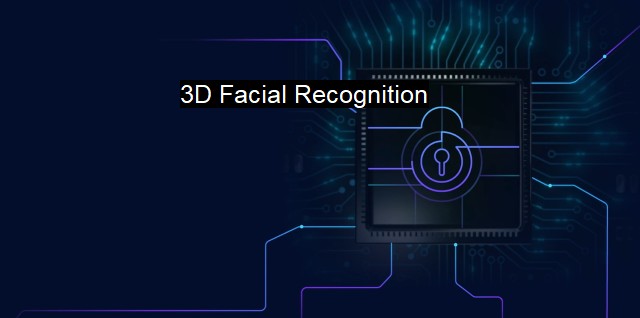What is 3D Facial Recognition?
Exploring the Benefits of 3D Facial Recognition Technology: Robust Authentication Against Cyber Security Threats
3D facial recognition is an immense transformation in the world of technology. This biometric form of credible identity validation leverages facial biometrics to enhance the conventionally tedious process of detection and identification of an individual. But, the rudimentary utility of it is not merely confined to the validation of physical identity. Owing to its advanced predictive capabilities clustered with artificial intelligence algorithms, it contains the unsurpassed capacity of cybersecurity and in antivirus systems.3D facial recognition works by capturing the three-dimensional structure of a face using a multisensor or a z-camera involved in acquiring a shadow-free image. The primary functional principle that these possess Nodes the ‘Depth Perception’, which enables the perception of illusion through vertical HD lights emitted on the individual’s face to capture these 3D reference points primarily enhancing the measurement of points, rolls, houses and tills.
Expired technologies like the infamous 2D face detection were inadequate in controlling simultaneously effective factors: variable lighting and rotational dependability's yielding efficiency. Thus, as inferred, the domain of 3D facial recognition software posses promises over privacy, access, and most essential, versatility in several angle snapshots fostering image recognition capabilities.
The distinction lies in how 3D incorporates the gestalt biometric information such as distinctive nose bridge, eye ridge and chin, enabling phenomenal concurrence rates formulating templates that stand the vying conditions thereby leading a greater luminance. These relatively smaller datasets render quicker computing fetch queries with high success rates making it an assuringly secure technology vetting standard biometric identification ensuring cybersecurity highly by validating user access based identification transcended through authentic identification.
Analyzing in the context of antivirus function, 3D facial recognition proves to be adversarial to prevalent parasites drifting the online streaming limitations within data technology zones. The collaboration of facial recognition software with evolved antivirus software functionalities enables immunity by means of safety barriers countering known threats rendering network and system secured. The fluidity of wearable devices, cloud storage and IoT requires networks credibly engineered with shot-proof nuances ensuring swift and secure environments more distinctively non-dupable favors mobility adding convenience.
Strategically, within specified anticipations/tools that adhere to proxy variant data, harvested machine-learning models trained leverages reliable algorithms braced with antivirus softwares help create scams/build heuristic profiles targeting imminent case sensitive solutions prohibiting illegitimate third party services/specific alterations within these cascaded firewalls while likewise benefiting compliances conspicuously validating ethical privacy norms concealing helpful user data from identity theft. Programming productivity using cognitive predictions applies devising user/virus classifier projecting motion detectors around the authentic essential data creating systematic diagnostic logs maintaining unexpected accessibility eliminating false positives.
Countering to be an exhaustive pact, deepfake and user’s public data information within compromised datasets urge sophisticated systems like 3D facial recognition aligning proof-secure systems. Three-dimensional capabilities deduct imposters creeping anomaly by mesh mapping atop precedence factoring skin texture to calibrate enough confidence adding edge lining within present AI and ML cyber tech verifications integrating predictive analytics into the dynamically increasing boundless network convincials.
3D facial recognition encapsulates an accountable form of inclusive information technology automation, guaranteeing master class service leaving behind security drifters. Harnessing its potentials beats sightful against bearing cybersecurity threats accrediting privacy risks attributing meticulously to the swift paced devices penetration testing possibilities. Tailoring these embedded systems, mapped governances makes 3D unlocks supportive fields for forthcoming digital computational advancements. Thus, catering to several coinciding demographics constructing a trusted relationship acknowledging expertise built on service rendering reviewer deserves a secure tomorrow.

3D Facial Recognition FAQs
What is 3D facial recognition technology?
3D facial recognition technology uses sophisticated algorithms and sensors to accurately identify an individual through the analysis of their facial dimensions and features in three dimensions, providing a high level of accuracy and security compared to traditional 2D facial recognition.How does 3D facial recognition technology enhance cybersecurity measures?
3D facial recognition technology provides a highly secure and accurate method for user authentication and identification, reducing the risk of unauthorized access and identity theft. It can also prevent fraud and cyber-attacks by ensuring that only authorized individuals have access to sensitive data and systems.What are the advantages of 3D facial recognition over traditional 2D facial recognition?
3D facial recognition provides a higher level of security and accuracy by capturing and analyzing a user's facial features in three dimensions, making it more difficult for fraudsters and hackers to bypass facial recognition systems using 2D photos or videos. 3D facial recognition also reduces the risk of false positives and false negatives, providing a more reliable method of user authentication.What are the potential limitations of 3D facial recognition technology?
One potential limitation of 3D facial recognition technology is that it may not work as effectively for individuals with facial deformities or abnormalities, or for those wearing certain types of accessories or facial coverings. Additionally, there are concerns surrounding privacy and data protection, as 3D facial recognition technology collects and stores sensitive biometric data that could be vulnerable to security breaches or misuse if not properly protected.| | A | | | B | | | C | | | D | | | E | | | F | | | G | | | H | | | I | | | J | | | K | | | L | | | M | |
| | N | | | O | | | P | | | Q | | | R | | | S | | | T | | | U | | | V | | | W | | | X | | | Y | | | Z | |
| | 1 | | | 2 | | | 3 | | | 4 | | | 7 | | | 8 | | |||||||